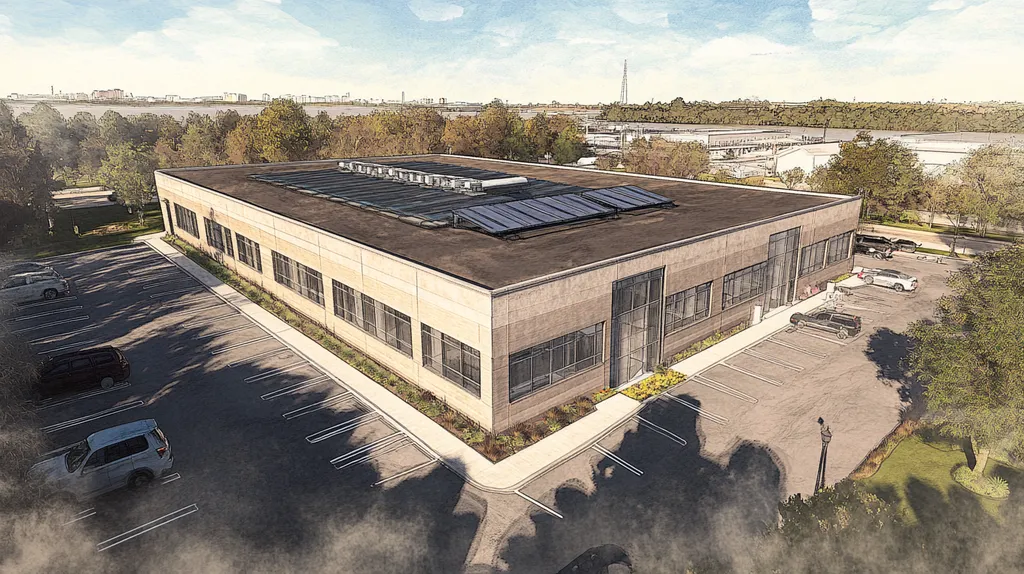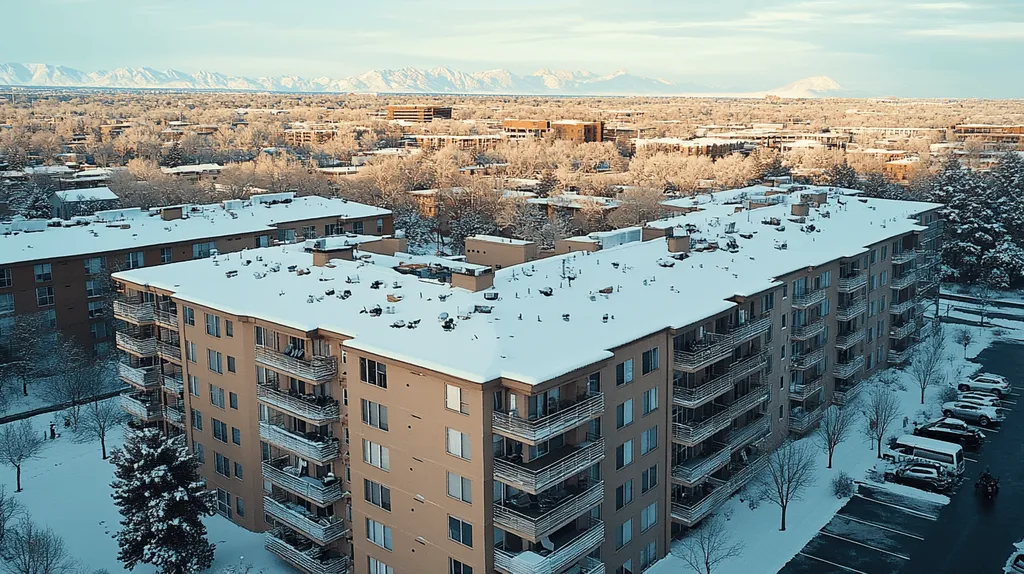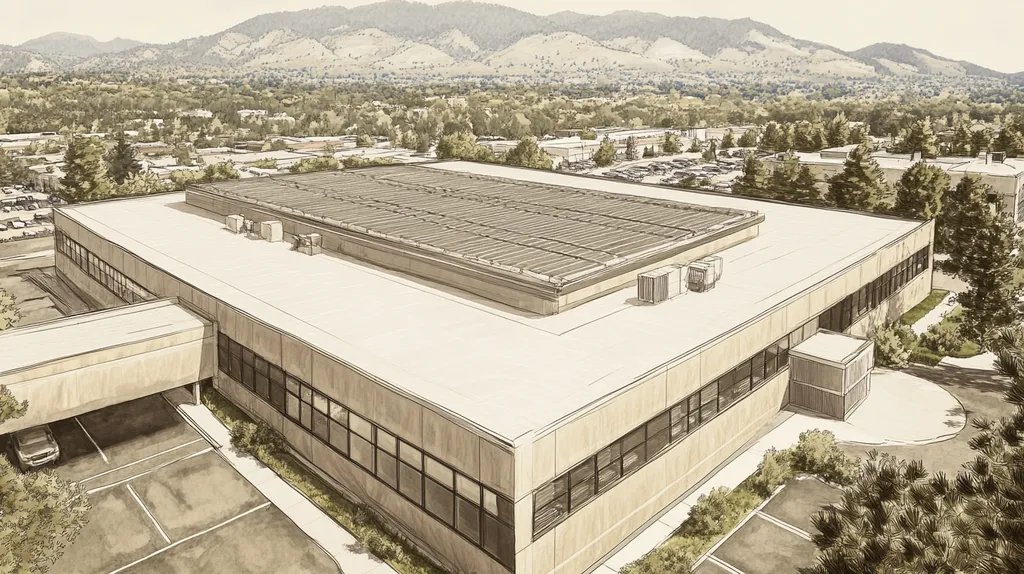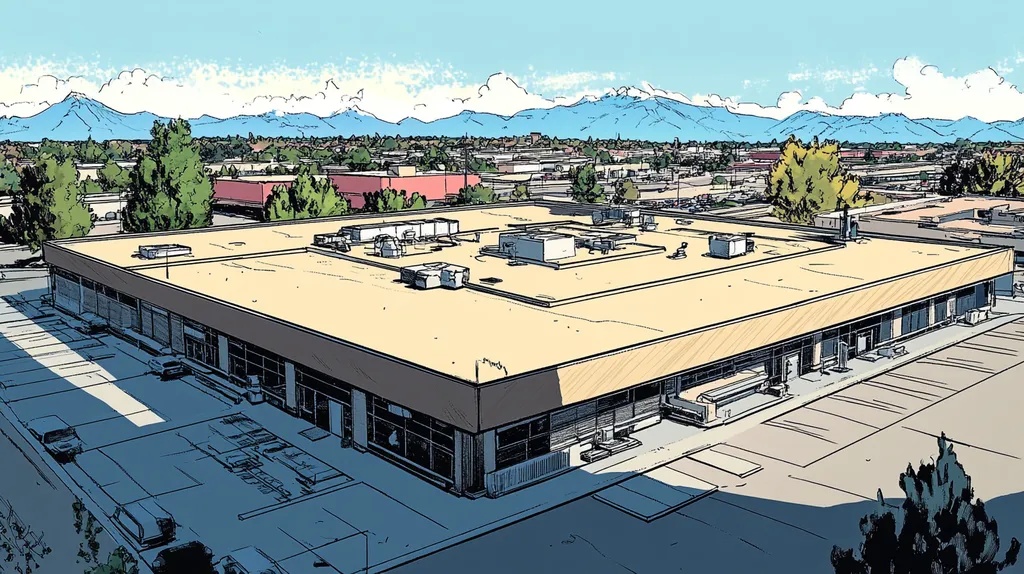With commercial buildings accounting for nearly 35% of U.S. cooling costs, effectively managing rooftop heat buildup has become a critical challenge for facility managers. Rising temperatures and urban heat island effects can drive roof surface temperatures above 150°F, severely impacting energy efficiency and structural integrity.
Recent studies show that optimized roof lighting solutions can reduce cooling costs by up to 30% while extending roof lifespan by 5-10 years. However, implementing these solutions requires careful consideration of performance factors, financial implications, and compliance requirements.
This comprehensive guide provides facility managers with actionable strategies for selecting, installing, and maintaining roof lighting systems that minimize heat retention while maximizing long-term value.
SECTION 1: PERFORMANCE FACTORS
For facility managers looking to optimize roof lighting solutions, understanding key performance factors is essential. With energy costs on the rise and a growing emphasis on sustainability, the efficiency of roof systems is increasingly critical. Buildings are responsible for around 40% of energy consumption in the U.S., which makes a smart roofing strategy vital. This section delves into important performance factors like solar reflectance, thermal emittance, heat absorption, and energy efficiency to support informed decision-making.
Solar Reflectance and Thermal Emittance
Solar reflectance is the ability of roofing materials to bounce sunlight away, directly impacting heat buildup. High reflectance can help keep roof surfaces cooler, which is especially important in hotter climates where cooling demands can soar.
On the other hand, thermal emittance measures how effectively a roofing surface releases absorbed heat back into the air. Materials that excel in thermal emittance can enhance the cooling process, lowering indoor temperatures and improving energy efficiency. Striking a balance between high solar reflectance and thermal emittance leads to significant energy savings.
For instance, light-colored or reflective roofing options are a fantastic choice, reflecting a large percentage of solar energy. This performance not only keeps roof temperatures in check but also reduces the energy consumed by air conditioning systems.
Key Action Items
Heat Absorption and Roof Temperature
Heat absorption is a pivotal factor affecting the temperature of commercial roofs. Dark roofing materials tend to absorb more sunlight, which can result in dangerously high rooftop temperatures. This excess heat seeps into buildings, raising cooling costs and straining HVAC systems.
Research shows that on sweltering summer days, roof temperatures can soar as much as 90°F above the surrounding air. The stress this places on roofing materials can lead to costly repairs down the line.
Using materials that reflect heat rather than absorb it can help maintain cooler rooftop temperatures. Opting for lighter-colored roofing not only boosts energy efficiency but also prolongs the lifespan of the roofing system.
Key Action Items
Energy Efficiency and Cooling Costs
Energy efficiency significantly impacts cooling costs, making it a critical focus for facility managers. A poorly insulated or reflective roof can lead to soaring energy bills, a pressing concern during the summer months when air conditioning use peaks.
For example, research indicates that a reflective roof can decrease air conditioning expenses by 15-30%. This reduction not only eases operational costs but also advances a facility’s sustainability objectives.
By adopting a well-structured roof lighting solution that prioritizes energy-efficient materials, facility managers pave the way for long-term financial benefits. It’s crucial to assess the total costs over a roof’s lifespan, including potential energy savings, when selecting materials.
Key Action Items
SECTION 2: FINANCIAL CONSIDERATIONS
Facility managers are often under pressure to manage budgets wisely, especially when it comes to roofing solutions. Since commercial roofs represent a substantial portion of operating expenses, grasping the financial impact of improved lighting technologies is crucial. Investing in adequate lighting can not only reduce energy costs but also prolong the life of roofing materials. This section explores initial installation costs, long-term energy savings, and available rebates that can make lighting upgrades a more appealing investment.
Initial Installation Costs
The initial installation costs for optimized roof lighting can vary widely depending on the lighting type and the complexity of installation. While traditional options, like LED fixtures, often come with a higher upfront price, their enhanced performance and longevity justify the investment.
Typically, the costs for installing energy-efficient lighting range from $2 to $8 per square foot, depending on the select materials. Though the initial outlay may feel hefty, it’s important to think of this as a key investment that maximizes a roof’s functionality over time.
Facility managers should also consider obtaining estimates from multiple vendors to ensure they receive competitive pricing. Investing in high-quality products that minimize heat absorption can lead to longer-lasting roofing systems, making initial costs less daunting.
Key Action Items
Long-Term Energy Savings
Long-term energy savings present a powerful incentive for adopting advanced lighting solutions. By integrating energy-efficient fixtures, facility managers can realize reductions in energy usage of up to 75%, significantly lowering monthly utility bills.
For instance, switching to LED lighting systems can save an average of $3,000 per year for a typical commercial building. This decrease in energy consumption directly translates to reduced operating expenses, freeing resources for other essential facility needs.
Additionally, energy-efficient lighting helps to minimize heat capture on roofs, maintaining consistent indoor temperatures and easing the workload on HVAC systems. Over time, these benefits can yield substantial cost savings.
Key Action Items
Potential Rebates and Incentives
Property owners should actively pursue available rebates and incentives to help mitigate installation costs. Numerous local and state utility programs or government initiatives often provide financial assistance for energy-efficient projects, making such investments more feasible.
For example, the Federal Energy Efficiency Tax Deduction enables businesses to claim deductions for improvements that enhance energy efficiency, offering substantial financial relief.
Since incentive programs frequently fluctuate, facility managers must stay informed about current opportunities in their area. Online resources focused on energy efficiency regularly update their listings of available rebates, simplifying the valuable search for financial support.
Key Action Items
SECTION 3: COMPLIANCE REQUIREMENTS
Facility managers must navigate various compliance regulations for roof lighting solutions, as non-compliance can lead to hefty fines and significant project delays. Understanding building codes, environmental standards, and local ordinances is crucial not only for initial installations but also for ongoing maintenance and performance. By meeting these requirements, facility managers can ensure safety, efficiency, and sustainability in their operations.
Building Codes and Regulations
Building codes are essential guidelines that stipulate specifications for construction and installation, including the lighting systems on commercial roofs. These codes are designed to ensure the safety and efficiency of lighting solutions. For instance, the International Energy Conservation Code (IECC) outlines mandatory energy efficiency measures that must be included in all new lighting installations.
Facility managers must also be aware of local amendments to these codes that may impose additional restrictions. This includes knowledge of wattage limits, specific fixture types, and lighting distribution requirements. Staying informed about these changes is key to avoiding penalties and ensuring compliance.
Adhering to building codes not only safeguards the facility but can also lower operational costs, making energy efficiency a win-win for budget-conscious managers. Regular inspections and consultations with experienced contractors can aid in navigating these codes effectively.
Key Action Items
Environmental Standards and Certifications
Achieving environmental sustainability is increasingly vital for facility managers. Various standards exist to encourage the adoption of lighting systems that minimize heat accumulation and energy use. For instance, the Leadership in Energy and Environmental Design (LEED) certification incentivizes facilities to implement energy-efficient designs, including smarter lighting systems.
To obtain LEED certification, facility managers must adhere to strict criteria around energy consumption, often requiring the use of high-efficiency lighting and automated systems that optimize energy usage. This compliance not only enhances a building’s appeal in the marketplace but can also lead to long-term cost savings.
Certifications like ENERGY STAR can also assist in selecting environmentally friendly, cost-effective lighting options, ensuring compliance contributes positively to overall energy performance. By integrating sustainable practices, facility managers strengthen their competitive edge in the industry.
Key Action Items
Local Ordinances and Zoning Laws
In addition to building codes and environmental standards, local ordinances and zoning laws can heavily influence roof lighting installations. Many municipalities enforce rules regarding light pollution and acceptable illumination levels to protect local communities and wildlife. Facility managers need to familiarize themselves with these local regulations to ensure compliance.
Specific lighting designs may be required, and ignoring these local laws can result in fines or enforced alterations that disrupt operations. Understanding and adhering to these requirements is essential for successful project planning.
Zoning laws may also influence where lighting systems can be installed, necessitating special permits in certain areas. Engaging with local authorities early on can clarify these requirements and help streamline installations.
Key Action Items
SECTION 4: RISK MANAGEMENT
Effective risk management is crucial for maintaining the longevity and safety of commercial roofs. This involves addressing key issues such as heat buildup, moisture retention, and structural integrity. With urban heat islands causing temperatures to soar, facility managers must pay close attention to how these factors can increase energy costs and lead to costly repairs.
Urban Heat Island Mitigation
Urban heat islands significantly amplify heat retention on roofs, driving cooling demands up. Research shows that reflective roofing materials can lower surface temperatures by as much as 20 degrees Fahrenheit, dramatically cutting energy costs and making interiors more comfortable.
Incorporating energy-efficient lighting solutions, such as LED lights, can further complement these efforts by emitting less heat than conventional bulbs, contributing to cooler roofs. This integration helps facility managers tackle heat buildup effectively.
Additionally, green roofs or rooftop gardens featuring strategically placed lighting add another layer of cooling. These installations absorb sunlight and provide shade, promoting healthier urban environments while simultaneously reducing heat accumulation.
Key Action Items
Moisture and Leak Prevention
Moisture buildup can cause severe roof damage, leading to leaks that threaten structural integrity. Poor drainage or ventilation increases the risk of water infiltrating roofing materials, which can result in expensive repairs and health hazards linked to mold growth. Proper lighting solutions, like skylights, allow natural light while enhancing ventilation and minimizing moisture levels.
Regular inspections to clear roof debris are critical to maintaining drainage efficiency. Additionally, combining effective lighting with inspections can better highlight problem areas that need attention.
Implementing moisture detection systems can also bolster risk management by providing early warnings of leaks. When integrated with efficient lighting, these systems improve visibility for inspections, allowing for quick responses to potential issues.
Key Action Items
Structural Integrity and Durability
Maintaining structural integrity is vital for the longevity of commercial roofing. Over time, excessive heat and moisture can weaken roofing materials, leading to warping and premature aging. It’s essential for facility managers to ensure roofs are designed to withstand the specific climate conditions of their locations.
Effective lighting plays a crucial role in maintaining structural integrity. Consistent illumination can facilitate early detection of physical defects during regular inspections, helping managers address vulnerabilities before they escalate.
Utilizing roofing materials that reflect heat, such as cool roofs, can enhance durability. These materials not only mitigate heat retention but also extend the lifespan of the roof, helping to manage replacement costs effectively.
Key Action Items
SECTION 5: OPERATIONAL PROCEDURES
As temperatures rise, so do energy costs and the risk of roof damage. Effective operational procedures are essential for managing heat buildup in commercial roofing systems, where cooling can consume up to 30% of energy. Facility managers need to adopt proactive strategies in roof maintenance, focusing on regular inspections, coating applications, and HVAC integration to enhance efficiency and extend the lifespan of roofing structures.
Regular Roof Inspections and Maintenance
Making frequent roof inspections a priority is key to catching potential issues before they worsen. Research shows that about 70% of roofing problems stem from inadequate maintenance. It’s recommended to schedule inspections at least twice a year, typically during the spring and fall, to assess for any seasonal damage.
While inspecting, facility managers should be on the lookout for signs of wear, such as cracks, blisters, and standing water. Failing to address these issues promptly can lead to significant deterioration and costly repairs. Keeping meticulous records of inspections will help track the roof’s condition over time.
Engaging a qualified professional for in-depth inspections is beneficial. Experts can identify subtle issues that may go unnoticed, ensuring a thorough assessment. Investing in this expertise can ultimately save money by preventing bigger problems down the line.
Key Action Items
Coating Application and Upkeep
Applying reflective roof coatings is a smart way to decrease heat absorption and lower energy expenses. These coatings can effectively reduce roof temperatures by as much as 20 degrees Fahrenheit, making buildings more comfortable while decreasing reliance on cooling systems.
Proper application is crucial, starting with thorough surface preparation. Facility managers must ensure roofs are clean and free of debris to promote good adhesion, and coatings should be applied during suitable weather to enhance durability.
Maintaining roof coatings is equally important. Regularly monitoring their condition and reapplying as needed—typically every five to ten years—will ensure ongoing effectiveness at reflecting heat. Conducting annual reviews can help pinpoint when timely maintenance is needed.
Key Action Items
Integration with HVAC Systems
Integrating roofing systems with HVAC technology is critical for maximizing energy efficiency. HVAC systems account for about 40% of energy consumption in commercial buildings, and optimizing their operation through smart roofing strategies can help balance indoor temperatures while minimizing strain on cooling systems.
Facility managers should collaborate with HVAC professionals to evaluate how roof designs can enhance air circulation. Placing vents strategically or utilizing cool roofing materials can support HVAC performance, potentially cutting cooling costs by 20%.
Regular communication between roofing and HVAC teams is essential for timely repairs and upgrades. By coordinating efforts, facility managers can manage energy usage more effectively and maintain comfortable indoor environments.
Key Action Items
SECTION 5: OPERATIONAL PROCEDURES
As temperatures rise, so do energy costs and the risk of roof damage. Operational procedures are essential for managing heat buildup in commercial roofing systems since cooling can account for up to 30% of energy usage. Facility managers must deploy effective strategies, such as regular inspections, coating applications, and HVAC integration, to enhance efficiency and extend the lifespan of roofs.
Regular Roof Inspections and Maintenance
Conducting frequent roof inspections is vital for spotting issues before they escalate into costly repairs. Approximately 70% of roofing problems arise from insufficient maintenance. To effectively monitor the roof’s condition, schedule inspections at least twice a year, particularly in the spring and fall when seasonal wear may occur.
During these inspections, facility managers should check for damage indicators like cracks, blisters, and pooling water. Ignoring these warning signs can lead to significant deterioration down the line. Keeping meticulous records of each inspection will help managers track changes and assess the roof’s ongoing health.
Engaging a qualified professional for thorough inspections can provide valuable insights and identify subtle problems that may otherwise go unnoticed. This proactive approach can ultimately save money by avoiding more severe issues in the future.
Key Action Items
Coating Application and Upkeep
Applying reflective roof coatings is a highly effective way to reduce heat absorption and energy expenses. These coatings can lower roof temperatures by as much as 20 degrees Fahrenheit, enhancing indoor comfort while decreasing reliance on cooling systems.
Proper application starts with meticulous surface preparation. Facility managers should ensure roofs are clean and free of debris to facilitate adhesion. It’s also crucial to apply coatings during favorable weather conditions for maximum durability.
Ongoing maintenance of these coatings is just as important. Facility managers should keep an eye out for wear and reapply coatings as needed, typically every five to ten years. Conducting annual reviews of the coating’s condition will help pinpoint when maintenance is necessary, ensuring the roof’s performance remains optimal.
Key Action Items
Integration with HVAC Systems
Integrating roofing systems with HVAC technology is crucial for maximizing energy efficiency. HVAC systems account for roughly 40% of energy use in commercial buildings, and optimizing their operation through smart roofing strategies can help maintain balanced indoor temperatures while reducing system strain.
Facility managers should partner with HVAC professionals to evaluate how roof designs can enhance air circulation. Strategically placed vents or utilizing cool roofing materials can work in tandem with HVAC systems to potentially cut cooling costs by around 20%.
Ongoing communication between roofing and HVAC teams can lead to timely repairs and efficient upgrades. When roofing and HVAC are aligned, it creates a cohesive approach to energy management and maintains occupant comfort in buildings.
Key Action Items
The Bottom Line
With commercial buildings accounting for over one-third of U.S. cooling costs and roof temperatures regularly exceeding 150°F, implementing effective lighting solutions has become critical for facility management.
Research demonstrates that optimized roof lighting can reduce cooling expenses by up to 30% while extending roof lifespans by 5-10 years through decreased heat retention.
Key success factors include selecting high-performance materials with strong solar reflectance, ensuring compliance with building codes and environmental standards, and maintaining rigorous inspection schedules.
As urban heat islands intensify and energy costs rise, facility managers who fail to address roof lighting efficiency risk accelerating structural degradation while paying increasingly higher cooling bills.
The time to act is now – the right lighting strategy is no longer optional, but essential for sustainable building operations.
FREQUENTLY ASKED QUESTIONS
Q. What performance factors affect a commercial roof’s efficiency?
A. Performance factors like solar reflectance and thermal emittance play crucial roles in a roof’s efficiency. High solar reflectance minimizes heat absorption, while effective thermal emittance helps release heat, both critical for maintaining lower indoor temperatures and reducing cooling costs.
Q. How do initial installation costs of industrial roof lighting compare?
A. Initial installation costs for industrial roof lighting can vary significantly based on the type of lighting chosen. Energy-efficient solutions, such as LEDs, might have higher upfront costs, but they offer enhanced longevity and may lead to substantial long-term savings on energy bills.
Q. What compliance requirements must a commercial roof meet?
A. Commercial roofs must comply with local building codes, environmental standards, and zoning laws. These regulations ensure safety, efficiency, and sustainability, often necessitating adherence to specific guidelines about installation materials and methods.
Q. How can urban heat islands affect my commercial roof?
A. Urban heat islands can significantly elevate temperatures on commercial roofs, leading to increased energy demands for cooling. Utilizing reflective roofing materials and energy-efficient lighting can help mitigate these effects, resulting in lower operational costs and improved comfort indoors.
Q. How often should I inspect my commercial roof?
A. It’s recommended to conduct inspections at least twice a year, particularly in spring and fall. Regular inspections help identify potential damage such as cracks and standing water, allowing facility managers to address issues before they escalate into costly repairs.
Q. What is the importance of coating applications on roofs?
A. Coating applications are vital for reducing heat absorption and enhancing energy efficiency. Reflective coatings can lower roof temperatures and are usually reapplied every five to ten years to maintain their effectiveness, prolonging the life of the roofing system.
Q. How can lighting designs support a commercial roof’s sustainability?
A. Integrating energy-efficient lighting with design elements can substantially reduce energy consumption and heat buildup on commercial roofs. Utilizing smart lighting technologies, like LEDs, ensures lower operational costs while contributing to sustainability goals within facility management.











